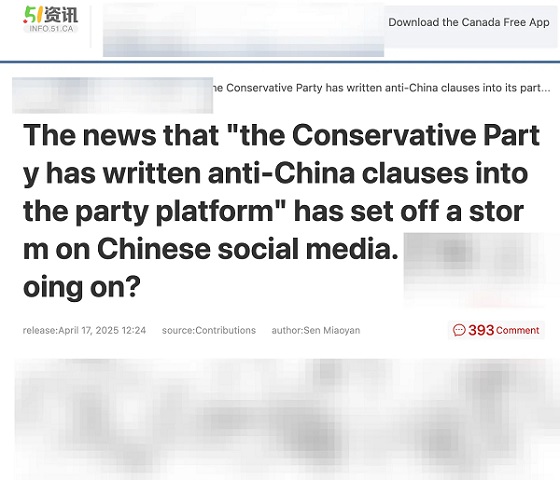Business
DOGE Theory

One of the most intriguing developments following Donald Trump’s election victory has been the announcement of Elon Musk and Vivek Ramaswamy’s Department of Government Efficiency, or DOGE. The initiative, which hopes to cut up to $2 trillion from the federal budget, has generated notable excitement, momentum, and memes. The world’s richest man and a successful biotech entrepreneur, Ramaswamy, have revitalized what seemed to be a mostly dormant libertarianism, drawing on the inspiration of Milton Friedman and promising to slash the bureaucracy to the bone. But what are its prospects for real-world success?
Elon Musk is our era’s most gifted entrepreneur, having revolutionized several industries and run multiple major companies. But the private sector operates on radically different principles than the public sector, which has a way of stalling or disarming even the most determined efforts. I foresee three potential impediments to DOGE’s success.
First is the problem of authority. While President-elect Trump has dubbed the effort the “Department of Government Efficiency,” it is not a government department at all. Rather, Musk and Ramaswamy will remain in the private sector and preside over what is, in effect, a blue-ribbon committee providing recommendations to the president and to Congress about potential cuts. In practice, though, blue-ribbon committees are often where ideas go to die. Politicians who feel the need to “do something” about a given problem often establish such committees to create the perception of action, which masks their true desire or, at least, the eventual result: inaction.
DOGE’s challenge will be to translate its recommendations into policy. It is almost certain that an entrepreneur of Musk’s ambition will not be content with writing a report. His and Ramaswamy’s task, then, is to persuade the president and the director of the Office of Management and Budget to enact real (and politically risky) cuts, and, if possible, to persuade Congress to abolish entire departments, such as the Department of Education, in the face of left-wing backlash.
The second problem for Musk and Ramaswamy is public opinion. Libertarians and small-government conservatives have long promised to reduce the size of government; one reason that they have never done so is that federal programs and agencies are generally popular. All of the major federal departments, with the exception of the IRS, the Department of Education, and the Department of Justice, have net-positive favorability numbers. Congressional members, even conservative Republicans, fear that slashing these departments would expose them to savage criticism from the Left and backlash from voters. They know that Americans complain about the size of government in theory but oppose almost all spending cuts in practice—the key paradox that libertarians have been unable to resolve.
Musk and Ramaswamy have repeatedly appealed to the work of Argentinian president Javier Milei, who has dramatically reduced the number of departments and created flashy video clips of himself stripping down organizational charts and yelling, “Afuera!” But what is possible in Argentina, which has been mired in a decades-long economic crisis, may not be achievable in the United States, which is much more stable, and, consequently, may not have the appetite for such dramatic action.
Which brings us to the problem of politics. Sending a rocket into space requires mastery over physics, but cutting government departments requires mastery over a more formidable enemy: bureaucracy. As Musk and Ramaswamy will see, the relationship between would-be reformers and Congress is vastly different from that between a CEO and a board of directors. To succeed, Musk and Ramaswamy must persuade a group of politicians, each with their own interests, to assume a high level of risk.
DOGE’s first task—identifying the budget items to cut—is the easy part. The hard part will be actually cutting them. They will have to convince Congress, which, for nearly 100 years, has refused to reduce the size of government, even when that notion had bipartisan support, as it did during the presidency of Bill Clinton, who promised that “the era of big government is over.”
This does not mean that DOGE cannot succeed. Though there may not be an appetite for a $2 trillion reduction in government spending, there is a hunger for targeted cuts that would strip the federal government of hostile ideologies that have made our institutions dysfunctional and our national life worse. For example, slashing grant funding for critical race theory would likely win support from voters; cutting the budget for USDA meat inspectors would not, and, given opportunity costs, would probably prove unproductive as well.
Perhaps the name of this committee—the Department of Government Efficiency—is also slightly off the mark. The problem is not only about efficiency, which suggests quantity, but about orientation, which implies quality. The federal government has long been captured by ideologies that misdirect its efforts. Simply making the bureaucracy more efficient will not solve that problem. DOGE must first determine what federal spending is worthwhile; from there, it can focus on creating “efficiencies.”
I hope that Musk and Ramaswamy can dispel my pessimism. Political realities have stifled countless reform efforts before now, and DOGE is an enterprise that would be difficult, if not impossible, under normal circumstances. But these are two remarkably talented men; if anyone is capable of shattering the mold, they can.
Please share your ideas, dissents, and thoughts in the comments. In the next newsletter, we will feature the best material in a“comment of the week” section. In the meantime, have a wonderful Thanksgiving.
Business
Is Government Inflation Reporting Accurate?


 David Clinton
David Clinton
Who ya gonna believe: official CPI figures or your lyin’ eyes?
Great news! We’ve brought inflation back under control and stuff is now only costing you 2.4 percent more than it did last year!
That’s more or less the message we’ve been hearing from governments over the past couple of years. And in fact, the official Statistics Canada consumer price index (CPI) numbers do show us that the “all-items” index in 2024 was only 2.4 percent higher than in 2023. Fantastic.
So why doesn’t it feel fantastic?
Well statistics are funny that way. When you’ve got lots of numbers, there are all kinds of ways to dress ‘em up before presenting them as an index (or chart). And there really is no one combination of adjustments and corrections that’s definitively “right”. So I’m sure Statistics Canada isn’t trying to misrepresent things.
But I’m also curious to test whether the CPI is truly representative of Canadians’ real financial experiences. My first attempt to create my own alternative “consumer price index”, involved Statistics Canada’s “Detailed household final consumption expenditure”. That table contains actual dollar figures for nation-wide spending on a wide range of consumer items. To represent the costs Canadian’s face when shopping for basics, I selected these nine categories:
- Food and non-alcoholic beverages
- Clothing and footwear
- Housing, water, electricity, gas and other fuels
- Major household appliances
- Pharmaceutical products and other medical products (except cannabis)
- Transport
- Communications
- University education
- Property insurance
I then took the fourth quarter (Q4) numbers for each of those categories for all the years between 2013 and 2024 and divided them by the total population of the country for each year. That gave me an accurate picture of per capita spending on core cost-of-living items.
Overall, living and breathing through Q4 2013 would have cost the average Canadian $4,356.38 (or $17,425.52 for a full year). Spending for those same categories in Q4 2024, however, cost us $6,266.48 – a 43.85 percent increase.
By contrast, the official CPI over those years rose only 31.03 percent. That’s quite the difference. Here’s how the year-over-year changes in CPI inflation vs actual spending inflation compare:
As you can see, with the exception of 2020 (when COVID left us with nothing to buy), the official inflation number was consistently and significantly lower than actual spending. And, in the case of 2021, it was more than double.
Since 2023, the items with the largest price growth were university education (57.46 percent), major household appliances (52.67 percent), and housing, water, electricity, gas, and other fuels (50.79).
Having said all that, you could justifiably argue that the true cost of living hasn’t really gone up that much, but that at least part of the increase in spending is due to a growing taste for luxury items and high volume consumption. I can’t put a precise number on that influence, but I suspect it’s not trivial.
Since data on spending doesn’t seem to be the best measure of inflation, perhaps I could build my own basket of costs and compare those numbers to the official CPI. To do that, I collected average monthly costs for gasoline, home rentals, a selection of 14 core grocery items, and taxes paid by the average Canadian homeowner.¹ I calculated the tax burden (federal, provincial, property, and consumption) using the average of the estimates of two AI models.
How did the inflation represented by my custom basket compare with the official CPI? Well between 2017 and 2024, the Statistics Canada’s CPI grew by 23.39 percent. Over that same time, the monthly cost of my basket grew from $4,514.74 to $5,665.18; a difference of 25.48 percent. That’s not nearly as dramatic a difference as we saw when we measured spending, but it’s not negligible either.
The very fact that the government makes all this data freely available to us is evidence that they’re not out to hide the truth. But it can’t hurt to keep an active and independent eye on them, too.
Subscribe to The Audit.
For the full experience, upgrade your subscription.
2025 Federal Election
Carney’s Hidden Climate Finance Agenda

From Energy Now
By Tammy Nemeth and Ron Wallace
It is high time that Canadians discuss and understand Mark Carney’s avowed plan to re-align capital with global Net Zero goals.
Mark Carney’s economic vision for Canada, one that spans energy, housing and defence, rests on an unspoken, largely undisclosed, linchpin: Climate Finance – one that promises a Net Zero future for Canada but which masks a radical economic overhaul.
Regrettably, Carney’s potential approach to a Net Zero future remains largely unexamined in this election. As the former chair of the Glasgow Financial Alliance for Net Zero (GFANZ), Carney has proposed new policies, offices, agencies, and bureaus required to achieve these goals.. Pieced together from his presentations, discussions, testimonies and book, Carney’s approach to climate finance appears to have four pillars: mandatory climate disclosures, mandatory transition plans, centralized data sharing via the United Nations’ Net Zero Data Public Utility (NZDPU) and compliance with voluntary carbon markets (VCMs). There are serious issues for Canada’s economy if these principles were to form the core values for policies under a potential Liberal government.
About the first pillar Carney has been unequivocal: “Achieving net zero requires a whole economy transition.” This would require a restructuring energy and financial systems to shift away from fossil fuels to renewable energy with Carney insisting repeatedly in his book that “every financial [and business] decision takes climate change into account.” Climate finance, unlike broader sustainable finance with its Environmental, Social, and Governance (ESG) focus would channel capital into sectors aligned with a 2050 Net Zero trajectory. Carney states: “Companies, and those who invest in them…who are part of the solution, will be rewarded. Those lagging behind…will be punished.” In other words, capital would flow to compliant firms but be withheld from so-called “high emitters”.
How will investors, banks and insurers distinguish solution from problem? Mandatory climate disclosures, aligned with the International Sustainability Standards Board (ISSB), would compel firms to report emissions and outline their Net Zero strategies. Canada’s Sustainability Standards Board has adopted these methodologies, despite concerns they would disadvantage Canadian businesses. Here, Carney repeatedly emphasizes disclosures as the cornerstone to track emissions data required to shift capital away from “high emitters”. Without this, he claims, large institutional investors lack the data on supply chains to make informed decisions to shift capital to businesses that are Net Zero compliant.
The second pillar, Mandatory Transition Plans would require companies to map a 2050 Net Zero trajectory for emission reduction targets. Failure to meet those targets would invite pressure from investors, banks, or activists, who may pursue litigation for non-compliance. The UK’s Transition Plan Task Force, now part of ISSB, provides this standardized framework. Carney, while at GFANZ, advocated using transition plans for a “managed phase-out” of high-emitting assets like coal, oil and gas, not just through divestment but by financing emissions reductions. “As part of their transition planning, [GFANZ] members should establish and apply financing policies to phase out and align carbon-intensive sectors and activities, such as thermal coal, oil and gas and deforestation, not only through asset divestment but also through transition finance that reduces real world emissions. To assist with these efforts GFANZ will continue to develop and implement a framework for the Managed Phase-out of high-emitting assets.” Clearly, the purpose of this is to ensure companies either decarbonize or face capital withdrawal.
The third pillar is the United Nations’ Net Zero Data Public Utility (NZDPU), a centralized platform for emissions and transition data. Carney insists these data be freely accessible, enabling investors, banks and insurers to judge companies’ progress to Net Zero. As Carney noted in 2021: “Private finance is judging…banks, pension funds and asset managers have to show where they are in the transition to Net Zero.” Hence, compliant firms would receive investment; laggards would face divestment.
Finally, voluntary carbon markets (VCMs) allow companies to offset emissions by purchasing credits from projects like reforestation. Carney, who launched the Taskforce on Scaling VCMs in 2020, has insisted on monitoring, verification and lifecycle tracking. At a 2024 Beijing conference, he suggested major jurisdictions could establish VCMs by COP 30 (planned for 2025 in Brazil) to create a global market. If Canada mandates VCMs, businesses especially small and medium enterprises (SMEs) would face much higher compliance costs with credits available only to those that demonstrate progress with transition plans.
These potential mandatory disclosures and transition plans would burden Canadian businesses with material costs and legal risks that constitute an economic gamble which few may recognize but all should weigh. Do Canadians truly want a government that has an undisclosed climate finance agenda that would be subservient to an opaque globalized Net Zero agenda?
Tammy Nemeth is a U.K.-based strategic energy analyst. Ron Wallace is an executive fellow of the Canadian Global Affairs Institute and the Canada West Foundation.
-

 2025 Federal Election13 hours ago
2025 Federal Election13 hours agoStudy links B.C.’s drug policies to more overdoses, but researchers urge caution
-

 conflict1 day ago
conflict1 day agoMarco Rubio says US could soon ‘move on’ from Ukraine conflict: ‘This is not our war’
-

 Business1 day ago
Business1 day agoChinese firm unveils palm-based biometric ID payments, sparking fresh privacy concerns
-

 2025 Federal Election2 days ago
2025 Federal Election2 days agoMark Carney Wants You to Forget He Clearly Opposes the Development and Export of Canada’s Natural Resources
-

 2025 Federal Election2 days ago
2025 Federal Election2 days agoPolice Associations Endorse Conservatives. Poilievre Will Shut Down Tent Cities
-

 Alberta2 days ago
Alberta2 days agoRed Deer Justice Centre Grand Opening: Building access to justice for Albertans
-

 Business1 day ago
Business1 day agoTrump: China’s tariffs to “come down substantially” after negotiations with Xi
-

 Business1 day ago
Business1 day agoTrump considers $5K bonus for moms to increase birthrate







